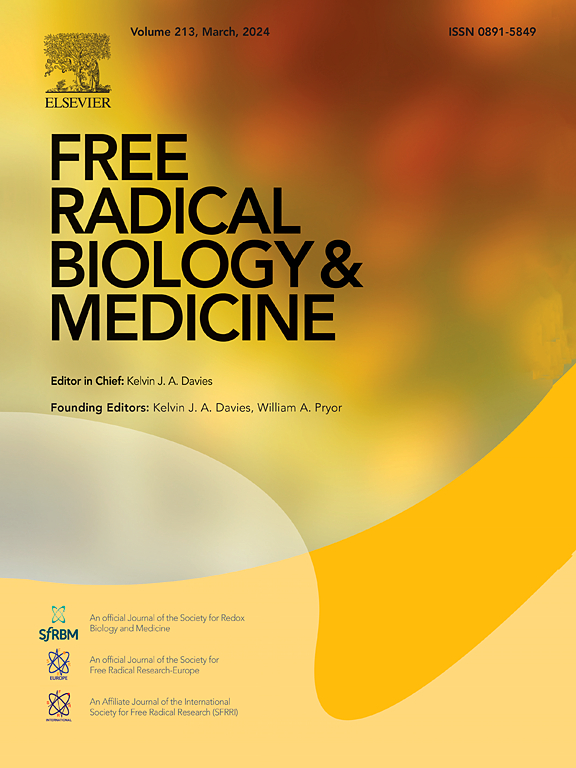Investigation of malondialdehyde as a trait marker associated with familial risk in patients with newly diagnosed bipolar disorder and their unaffected first-degree relatives – A longitudinal cohort study
IF 7.1
2区 生物学
Q1 BIOCHEMISTRY & MOLECULAR BIOLOGY
引用次数: 0
Abstract
Aims
Increased oxidative stress-generated tissue damage seems to play a pivotal role in the pathophysiology and progression of bipolar disorder (BD). Malondialdehyde (MDA), a product of lipid oxidation, may represent a trait marker in BD associated with familial risk. However, MDA is scarcely studied in patients with newly diagnosed bipolar disorder (BD) and their unaffected relatives (UR).
Methods
In this prospective "the Bipolar Illness Onset study", we investigated repeated measurements of MDA in a cohort of 371 patients with newly diagnosed/first-episode BD (1016 visits), 139 of their unaffected first-degree relatives (307 visits) and 199 healthy control individuals (HC) with no personal or first-degree family history of affective disorder (537 visits) with a median follow-up time of 2.0. [0.1; 3.8] years for patients with BD, 1.4 [0; 2.4] years for UR, and 2.5 [1.1; 3.9] years for HC. Amongst patients with BD, we further investigated associations of MDA with affective phases and medicine- and illness variables over a period of 7 years.
Results
Unaffected relatives had 42.3 % higher levels of MDA at baseline compared with HC in analyses adjusted for sex and age corrected for multiple comparisons (B = = 1.423, 95 % CI = 1.139, 1.777, p = <0.044). However, this difference did not persist over time. No statistically significant differences in MDA levels were observed over time between BD patients and either HC or UR. Additionally, MDA levels were not associated with psychotropic use, illness variables, or affective phase alterations.
Conclusions
Against expectations, our findings did not support increased lipid oxidation being a trait phenomenon in BD.

求助全文
约1分钟内获得全文
求助全文
来源期刊

Free Radical Biology and Medicine
医学-内分泌学与代谢
CiteScore
14.00
自引率
4.10%
发文量
850
审稿时长
22 days
期刊介绍:
Free Radical Biology and Medicine is a leading journal in the field of redox biology, which is the study of the role of reactive oxygen species (ROS) and other oxidizing agents in biological systems. The journal serves as a premier forum for publishing innovative and groundbreaking research that explores the redox biology of health and disease, covering a wide range of topics and disciplines. Free Radical Biology and Medicine also commissions Special Issues that highlight recent advances in both basic and clinical research, with a particular emphasis on the mechanisms underlying altered metabolism and redox signaling. These Special Issues aim to provide a focused platform for the latest research in the field, fostering collaboration and knowledge exchange among researchers and clinicians.
 求助内容:
求助内容: 应助结果提醒方式:
应助结果提醒方式:


